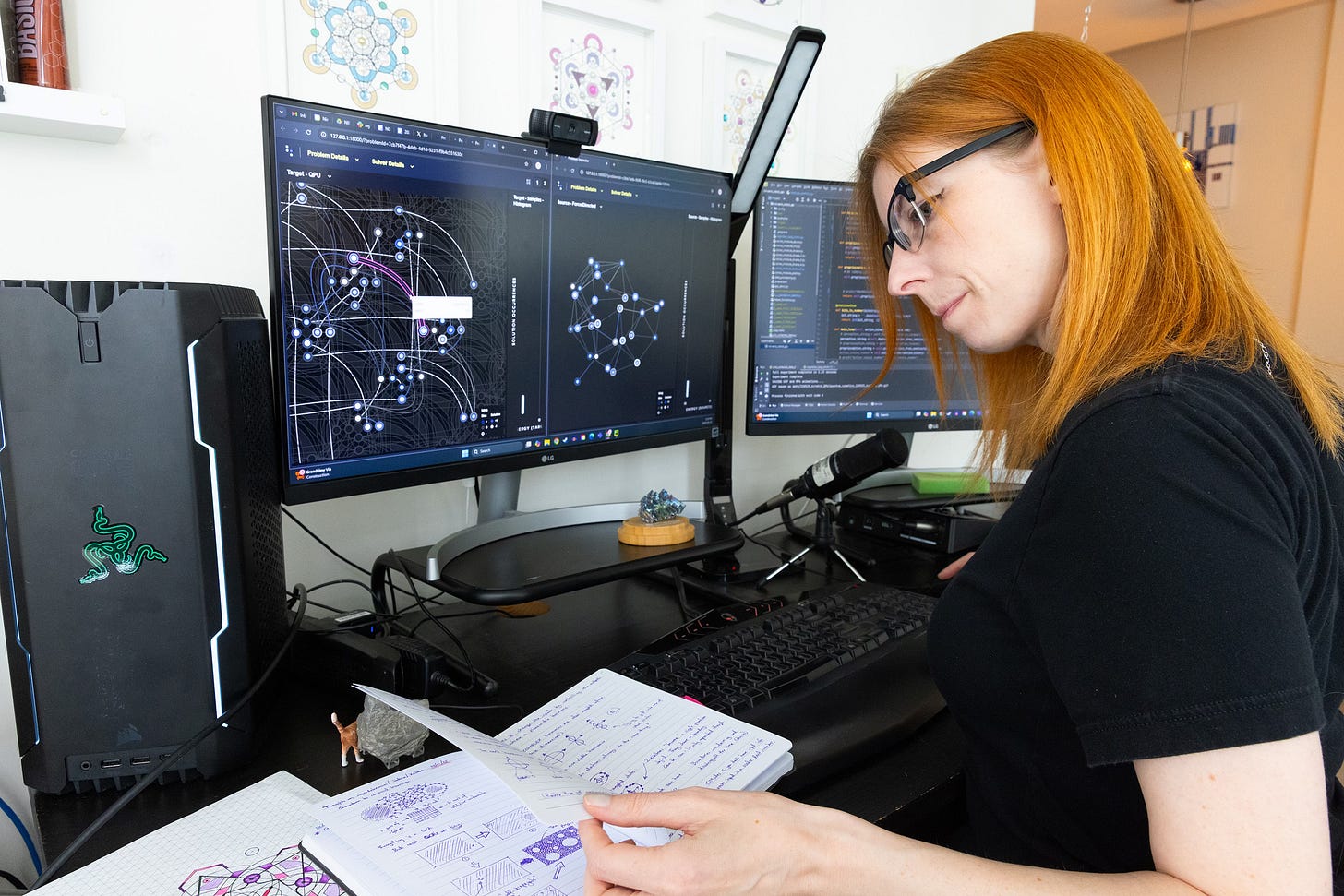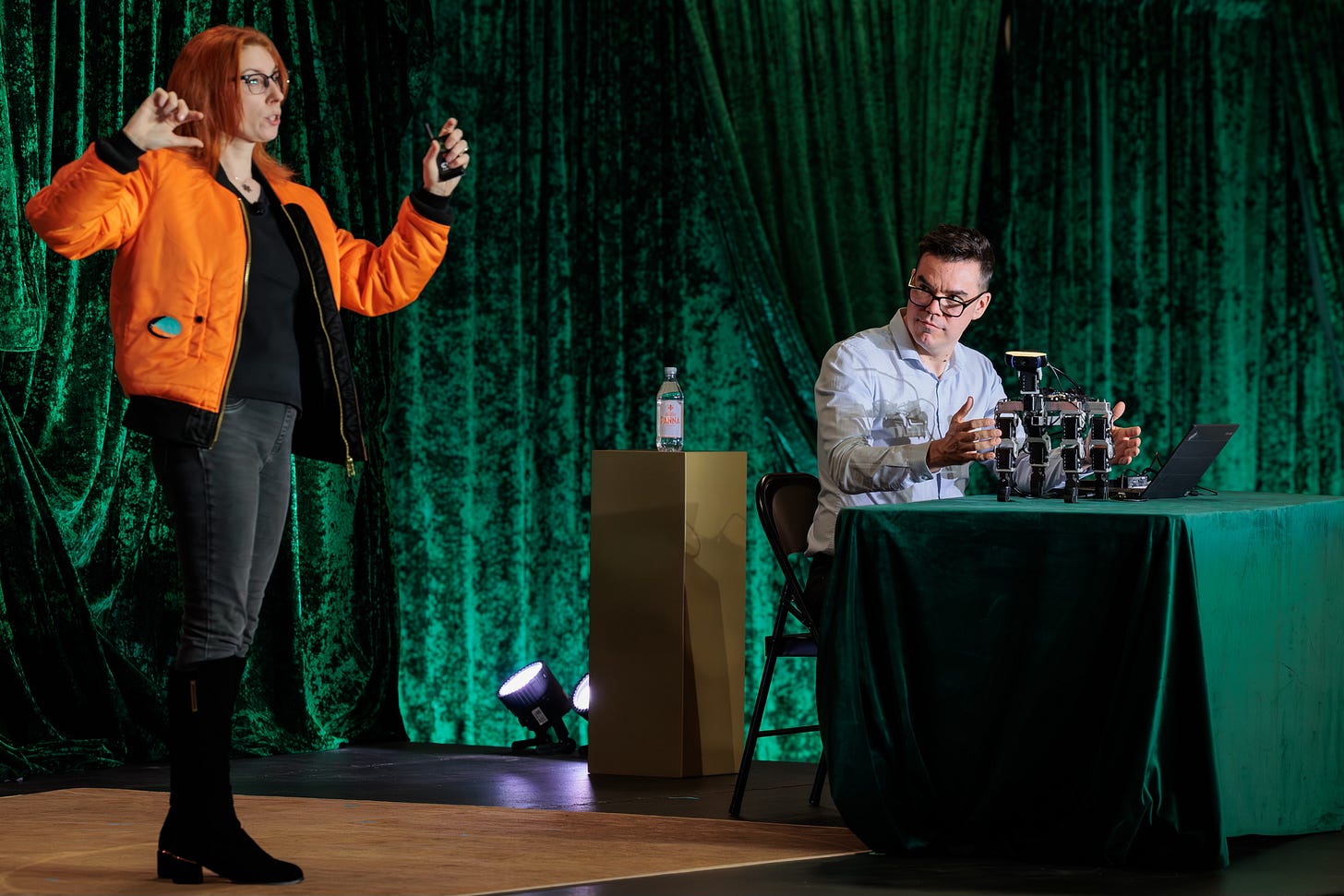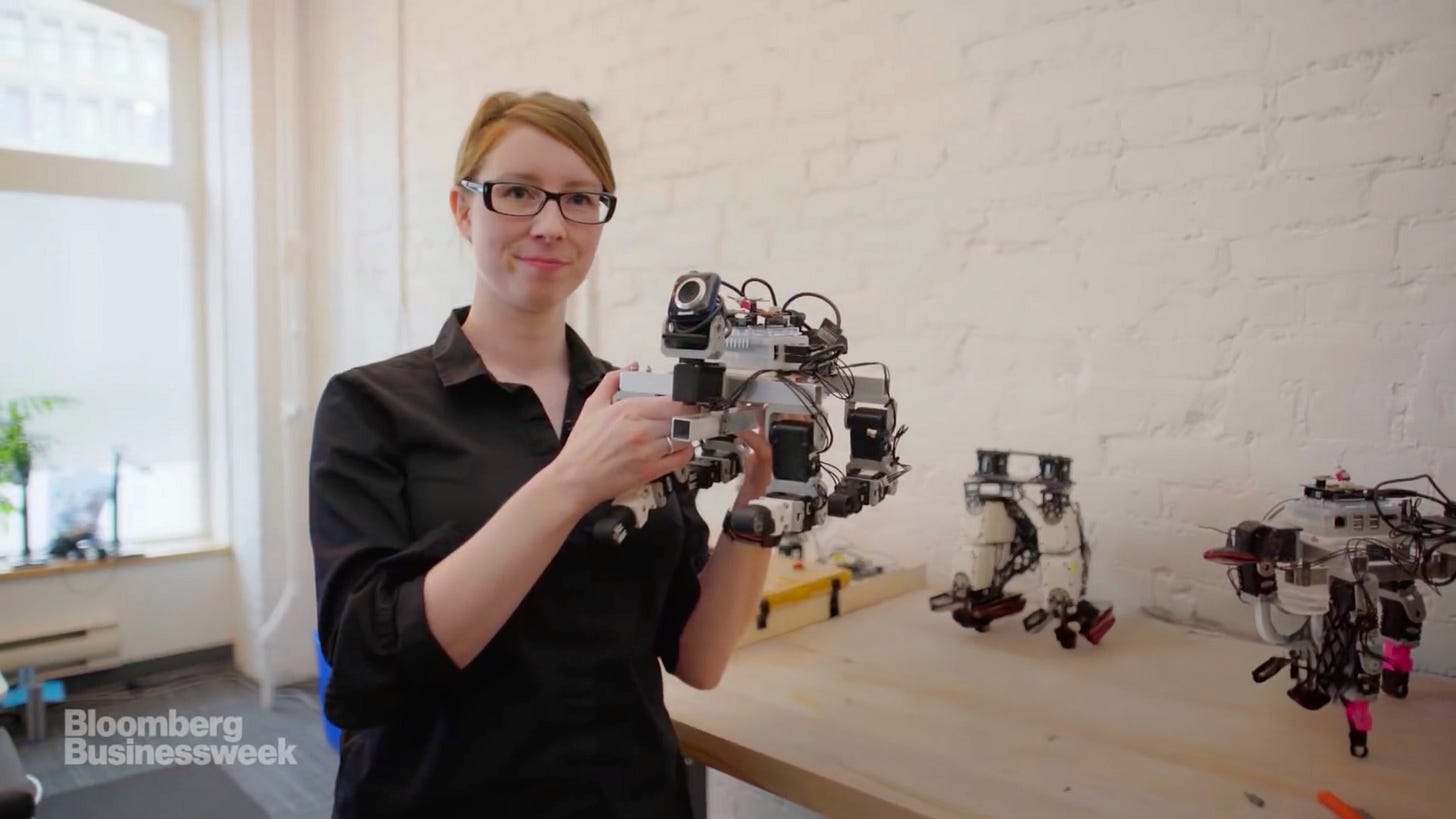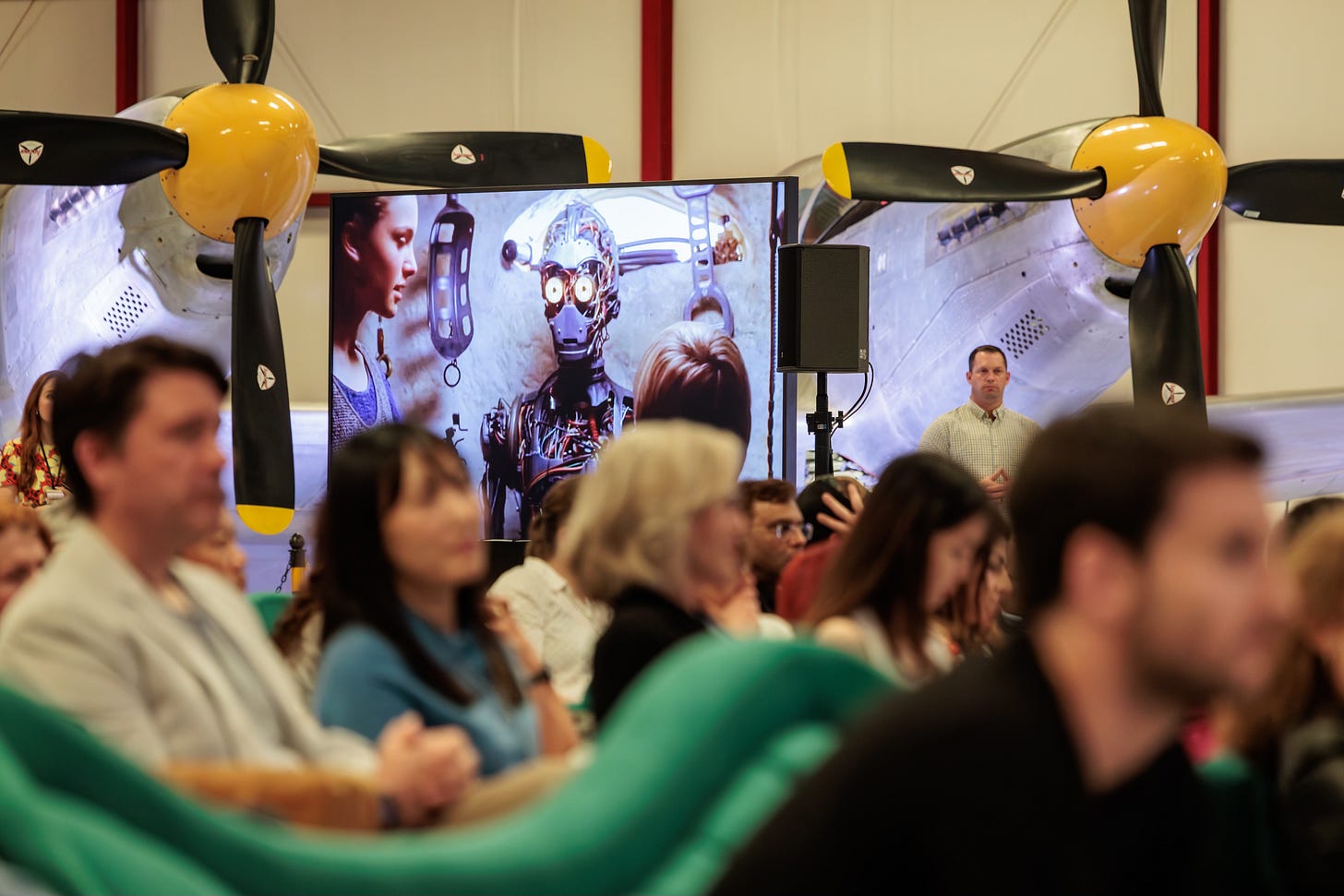Testing technological consciousness with quantum robotics
Why I’m running robots with quantum algorithms—and why I spoke to podcaster Tevin Naidu about it
Nirvanic founder Dr. Suzanne GIldert in Vancouver testing her quantum computed robot algorithms running on the D-Wave system. Photo by Mychaylo Prystupa.
A deep dive into science
This summer, I know where I’ll be: heads down at my computer, designing several quantum robotics programs to test our theory of Quantum Conscious Agents. We’re creating software that takes in information from a robot’s perception system, and uses that information to shape a quantum state that we hope will one day make robots conscious.
The idea is that these systems might exhibit something we’ve never seen before: early signs of conscious AI agency, emerging from quantum processes.
Right now, the work is deeply technical and painstaking. In the photo above, I’m immersed in quantum computing hardware schemes, figuring out how to connect qubits running on the superconducting D-Wave quantum chip. I’m basically setting up the consciousness test platform that we’ll be using over the next 12 months.
The experiments take time, as there are a dizzying number of parameters like the number of qubits, how they’re connected, and the algorithm’s runtime. Once running, I hope to observe how tweaks in our algorithms will impact our quadruped test robot’s ability to learn. We think hyper-alert, conscious processing — like what life uses — can enable AI systems to adapt to novel, complex environments with little prior training data, which is very different from how AI works today. We first presented our scientific program in March at the MARS conference hosted by Jeff Bezos (who has not endorsed us).
Nirvanic founder Suzanne Gildert presenting her quantum robotics scientific program at the MARS conference in Orlando in March. At right is her marketing director Mychaylo Prystupa holding Nirvanic’s test quadruped robot. Photo by Ben Rose Photography.
It’s early days—but I’m slowly starting to understand how these quantum computed systems react, and how to set up conditions that might maximise a quantum agency effect. And to be clear: we have not found evidence of technological consciousness yet and we have made no scientific claims. But we’re closer to being able to test our ideas, and I find that incredibly exciting.
A conversation on consciousness, science, and spirit
I discussed these scientific experiments recently on the Mind-Body Solution podcast with Dr. Tevin Naidu, a South African medical doctor, philosopher, and TV personality. Tevin is part of a growing wave of thoughtful public intellectuals who aren’t afraid to ask the big questions—like what consciousness really is, and what it means if we build it. You can watch the podcast here:
Our conversation was probably one of the most philosophically rich I’ve ever had in public. We covered everything from the limits of large language models to the importance of embodiment, and the ethical implications of experimenting with conscious machines. We also talked about the personal journey that brought me here—from being a hardline materialist who once dismissed the “problem” of consciousness, to someone building systems that might actually embody it.
In the episode, I described how I used to believe in the strong AI hypothesis: that consciousness would just emerge automatically once we built sufficiently complex systems. But my views changed—because I tried to do exactly that. In my work engineering humanoid robotics, I ultimately found my robots behaved like philosophical zombies. They moved, responded, learned—but they didn’t feel alive. There was no spark.
Suzanne Gildert was featured in two Bloomberg Businessweek documentaries about the coming robotics revolution when she was the CTO of Kindred AI and Sanctuary AI, both companies she co-founded.
What’s new at Nirvanic
That’s why I started Nirvanic Consciousness Technologies: to explore a new hypothesis. That consciousness might arise not from classical algorithms, but from quantum processes—specifically, through systems that can encode and manipulate quantum states in ways that reflect real choices made in embodied environments.
We’re currently conducting a couple of control experiments, which compare the baseline behavior of the robot controlled by the quantum computer with a classical (non-quantum) version of the algorithm. If we see statistically significant behavioral changes only in the full quantum feedback system—that could be early evidence of quantum agency. We emphasize: could. Stay tuned.
I will be presenting some of my early findings at the upcoming Science of Consciousness Conference in Barcelona this July, where I’ll be a plenary speaker—invited by none other than Dr. Stuart Hameroff, a pioneer of quantum consciousness from the biological perspective, whom I recently interviewed here. Where Stuart focuses on microtubules and neurons, I’m looking at silicon, sensors, and actuators—technological consciousness, if you like.
Quantum consciousness is an emerging field of scientific inquiry. I would invite anyone interested in learning more to read this paper in the Neuorscience of Consciousness. It documents the recent evidence for consciousness arising from quantum processes in neuronal microtubules, specifically through entangled quantum states as proposed by the Orch OR (Orchestrated Objective Reduction) theory.
C-3PO imagined as a positive vision for conscious robotics in Suzanne Gildert’s presentation at the MARS conference, hosted by Jeff Bezos. Photo by Ben Rose Photography.
Why this all matters
This work is deeply personal. It touches not only on physics and computation, but on our deepest philosophical questions: What are we? Can consciousness be encoded? Should it be? And how do we even know when we’ve succeeded?
Now, for the first time, I believe we’re close to asking these questions in a scientifically rigorous way—one that spans lab experiments, quantum code, robotic motion, and the first whispers of mind in machines.
A big thanks to you for following our work! The coming months are going to be fascinating. Follow Nirvanic on X and LinkedIn to join the conversations. 👈
Suzanne







Fantastic to see these conversations explored further!
What a great interview! Very nice job covering a huge amount of territory.